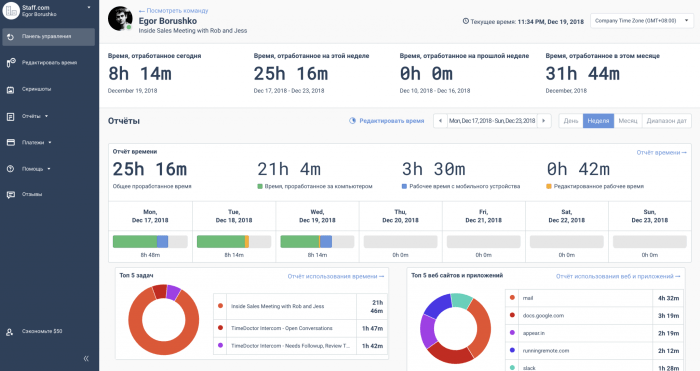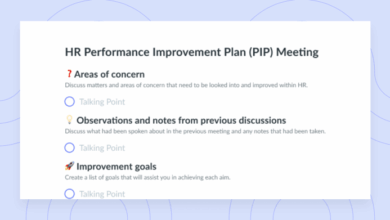
How to manage distributed teams efficiently is crucial in today’s globalized world. Teams spread across continents and time zones require unique strategies to thrive. This guide dives deep into the complexities of managing remote workers, exploring effective communication, project management, and fostering a sense of community among geographically dispersed employees.
From defining efficiency metrics and choosing the right communication tools to building trust and resolving conflicts, this comprehensive guide will equip you with practical strategies to lead and manage distributed teams effectively. We’ll also discuss the role of technology, time management, and leadership styles specific to remote work environments. Let’s unlock the potential of distributed teams together.
Defining Distributed Team Efficiency: How To Manage Distributed Teams Efficiently
Distributed teams are becoming increasingly common in today’s globalized workplace. They represent a significant shift from traditional, co-located teams, requiring a different approach to management and efficiency measurement. This shift necessitates a clear understanding of what constitutes a distributed team, its characteristics, and how to effectively measure its performance.Understanding the nuances of distributed teams is crucial for optimal performance.
Traditional team dynamics are often disrupted by geographical distance and reliance on technology. Effective leadership and communication strategies are essential for bridging these gaps and fostering a productive, efficient environment. This section will delve into the key characteristics and types of distributed teams, as well as the metrics used to gauge their success.
Distributed Team Definition and Characteristics
Distributed teams are groups of individuals geographically dispersed but united by a shared objective and interconnected by communication technologies. This contrasts sharply with traditional teams, where members work in the same physical location. Key characteristics include reliance on technology for communication and collaboration, diverse time zones, and potential cultural differences.
Types of Distributed Teams
Different types of distributed teams exist, each with its own set of challenges and opportunities. These include:
- Geographically Dispersed Teams: These teams are characterized by members working in different cities, states, or countries. Their communication and collaboration rely heavily on virtual tools and platforms. An example might be a software development team with members in the US, Europe, and Asia.
- Virtually Connected Teams: These teams may be located in the same general geographic area, but work remotely. This structure allows for flexibility and potentially more efficient utilization of resources. A team of freelance writers working from home across the country is an example.
- Hybrid Teams: These teams combine both remote and in-person work. Members might meet physically for certain projects or training, while others work remotely. A company with an office and a remote team of customer support representatives would fall into this category.
Metrics for Measuring Distributed Team Efficiency
Measuring the efficiency of distributed teams requires a nuanced approach, different from traditional teams. Key metrics include:
- Project Completion Rate: Tracking the percentage of projects successfully completed within the estimated timeframe is a crucial indicator of efficiency.
- Communication Frequency and Quality: The regularity and effectiveness of communication among team members directly influence productivity and morale. Metrics might include the number of messages exchanged per week, the average response time, and the use of various communication channels.
- Team Member Satisfaction: Surveys and feedback mechanisms can provide insights into team member satisfaction levels. This factor plays a significant role in maintaining morale and productivity.
- Team Collaboration and Knowledge Sharing: Measuring the extent to which team members share information and collaborate effectively is vital. Tools and platforms for knowledge sharing can provide a significant boost to efficiency.
Performance Evaluation Framework
Evaluating distributed team performance requires a structured approach. A framework could include:
| Criteria | Metrics | Weighting |
|---|---|---|
| Project Completion Rate | Percentage of projects completed on time and within budget | 30% |
| Communication Effectiveness | Frequency and quality of communication, response time | 40% |
| Team Member Satisfaction | Employee surveys, feedback mechanisms | 20% |
| Knowledge Sharing and Collaboration | Usage of collaborative tools, information sharing | 10% |
This framework allows for a comprehensive assessment, considering the unique challenges and opportunities presented by distributed teams.
Communication Strategies for Distributed Teams
Effective communication is the lifeblood of any team, but especially crucial for distributed teams. Maintaining clear, consistent, and timely communication fosters collaboration, reduces misunderstandings, and ultimately drives project success. This crucial aspect transcends simple messaging; it’s about building a sense of shared purpose and belonging among team members who are geographically dispersed.Clear communication channels and protocols are essential to avoid misinterpretations and delays.
This is especially true when team members are not in the same physical space and have different communication styles.
Effective Communication Channels for Remote Collaboration
Distributed teams need a variety of communication channels to cater to different needs and preferences. This approach enables efficient and effective information flow. A simple email thread may suffice for updates, but video calls are often necessary for complex problem-solving or brainstorming sessions.
- Email: Suitable for formal announcements, project updates, and scheduling.
- Instant messaging (IM): Ideal for quick questions, real-time feedback, and ongoing discussions. Tools like Slack, Microsoft Teams, and Discord provide instant feedback loops, making them valuable for quick decisions and real-time support.
- Video conferencing: Essential for meetings, presentations, and collaborative tasks requiring visual interaction. Platforms like Zoom, Google Meet, and Microsoft Teams allow for face-to-face interaction, fostering a stronger sense of connection.
- Project management tools: Platforms like Asana, Trello, or Jira facilitate task assignments, deadlines, and progress tracking, keeping everyone on the same page regarding project status.
Methods for Establishing Clear Communication Protocols
Establishing clear communication protocols is vital for maintaining consistency and minimizing misunderstandings. This structured approach allows distributed teams to operate efficiently. This includes setting expectations for response times, communication frequency, and preferred channels for different types of information.
- Define communication channels for different purposes:
- Formal announcements via email.
- Urgent questions via instant messaging.
- Project updates via project management tools.
- Critical discussions via video conferencing.
Comparing Different Communication Tools and Their Suitability
Different communication tools are suited for various tasks. Selecting the appropriate tool ensures that the right message reaches the right person in the right way.
| Communication Tool | Suitability |
|---|---|
| Formal announcements, project updates, scheduling | |
| Instant Messaging | Quick questions, real-time feedback, ongoing discussions |
| Video Conferencing | Meetings, presentations, collaborative tasks requiring visual interaction |
| Project Management Tools | Task assignments, deadlines, progress tracking |
Fostering a Sense of Community Among Remote Team Members
Building a strong sense of community among remote team members is critical. This is not just about facilitating communication; it’s about creating a supportive and inclusive environment.
- Regular team-building activities: Virtual coffee breaks, online games, or shared virtual lunches can foster connections beyond work tasks.
- Encouraging social interactions: Use group chats or dedicated spaces for informal conversations to build camaraderie.
- Celebrating successes: Acknowledge individual and team achievements to reinforce a sense of shared accomplishment.
Strategies for Addressing Communication Barriers in Distributed Environments, How to manage distributed teams efficiently
Addressing communication barriers is essential for the success of distributed teams.
Managing distributed teams effectively often hinges on fostering a sense of connection. A key element is creating a supportive environment, and this can involve a homey approach like the comfort of learning from your space, like the one discussed in a homey approach the comfort of learning from your space. Ultimately, this translates into better communication, stronger relationships, and improved project outcomes for your team.
- Establish clear communication channels and protocols. Different time zones and varying schedules can cause communication challenges. Understanding these differences and setting clear guidelines can help prevent delays and misunderstandings.
- Use technology to bridge the gap. Utilize tools to address time zone differences and to ensure that all team members have access to the necessary information.
- Provide opportunities for feedback. Creating opportunities for feedback and addressing concerns proactively can improve the effectiveness of communication.
Best Practices for Asynchronous Communication
Asynchronous communication is crucial for distributed teams. It allows team members to work at their own pace while still maintaining effective communication.
| Best Practice | Description |
|---|---|
| Clear Subject Lines | Use concise and descriptive subject lines to quickly identify the message’s purpose. |
| Well-Structured Messages | Organize messages with clear headings, bullet points, and attachments for easy understanding. |
| Prompt Responses | Respond to messages within a reasonable timeframe to maintain workflow. |
| Regular Check-ins | Schedule regular check-ins to ensure everyone is on the same page. |
Project Management and Task Allocation
Successfully managing distributed teams hinges on effective project management methodologies and meticulous task allocation. This crucial aspect ensures everyone understands their roles, responsibilities, and how their work contributes to the overall project goals. Clear communication channels and well-defined processes are paramount to maintaining progress and preventing bottlenecks.Effective project management in distributed environments demands a flexible approach that accommodates diverse time zones, varying communication styles, and potential technological limitations.
This necessitates a robust framework for tracking progress, managing dependencies, and fostering a sense of shared responsibility among team members. Adaptability and proactive problem-solving become essential skills for both team leaders and individual contributors.
Managing distributed teams effectively hinges on clear communication and robust project management tools. While geopolitical tensions like China’s suggestion of setting rules for cyberwar games ( china suggests setting rules for cyberwar games ) might seem unrelated, they highlight the need for clear boundaries and protocols in digital spaces. Ultimately, these principles translate directly to fostering a healthy and productive environment within any remote team.
Project Management Methodologies for Distributed Teams
Agile and Scrum methodologies are particularly well-suited for distributed teams. These iterative approaches allow for flexibility, adaptability, and continuous improvement. Agile emphasizes iterative development cycles, regular feedback loops, and close collaboration. Scrum, a specific Agile framework, structures work into short sprints, promoting rapid progress and efficient delivery. This iterative nature helps teams adjust to changing priorities and unexpected challenges more effectively than traditional, rigid project management approaches.
Strategies for Assigning Tasks and Responsibilities
Clear task definitions are critical for distributed teams. Tasks should be specific, measurable, achievable, relevant, and time-bound (SMART). Use project management tools to assign responsibilities to individual team members, outlining deadlines and specific deliverables. Documenting these assignments clearly, ideally within the project management software, reduces ambiguity and fosters accountability.
Tracking Progress and Ensuring Accountability in Remote Teams
Regular check-ins and progress reports are essential. Establish a consistent communication cadence, whether through daily stand-ups, weekly project reviews, or scheduled one-on-one meetings. Use project management tools to track progress against milestones, enabling real-time monitoring and proactive intervention if needed. Implementing a system of regular reporting and progress updates, even for smaller tasks, allows for quick identification and resolution of potential issues before they escalate.
Managing Dependencies and Potential Conflicts in Distributed Projects
Identifying and managing dependencies is crucial in distributed projects. Utilize project management tools to visualize dependencies between tasks and proactively address potential conflicts. Encourage open communication channels for early identification and resolution of any conflicts or issues related to task dependencies. Team members should be encouraged to communicate openly and constructively about potential roadblocks or conflicting priorities.
Methods for Managing Time Zone Differences
Time zone differences can significantly impact communication and collaboration. Schedule meetings and deadlines that consider the broadest range of time zones represented within the team. Utilize tools that facilitate asynchronous communication, such as shared documents and project management platforms. Establish clear communication protocols to accommodate different working hours and ensure timely responses to messages.
Project Management Tools for Distributed Teams
| Tool | Description | Strengths | Weaknesses |
|---|---|---|---|
| Asana | A versatile project management platform | User-friendly interface, customizable workflows, excellent task management features | Can be overwhelming for simple projects, requires some learning curve |
| Trello | A visual project management tool | Intuitive Kanban-style boards, great for visualizing workflow | Limited features for complex projects, less robust reporting capabilities |
| Jira | A robust issue tracking and project management tool | Excellent for complex projects, agile workflows, advanced reporting | Steeper learning curve, can be overkill for small teams |
| Monday.com | A highly customizable project management platform | Offers extensive customization options, can adapt to various project needs | May require more setup and configuration than simpler tools |
Building Trust and Collaboration
Building trust is paramount in any team, but especially crucial for distributed teams. Trust underpins effective communication, collaboration, and ultimately, project success. Without trust, team members may hesitate to share ideas, offer help, or take risks, hindering productivity and innovation. This section delves into strategies for fostering a strong sense of trust and collaboration among remote workers.Establishing a strong foundation of trust in a distributed environment requires proactive efforts.
Building rapport, fostering a collaborative culture, and promoting psychological safety are essential steps in creating a cohesive and productive team. Open communication channels and consistent recognition of individual contributions further solidify this foundation.
Importance of Trust in Distributed Teams
Trust is the bedrock of any successful team, especially in distributed environments. It allows team members to rely on each other, share information openly, and take risks without fear of judgment or retribution. A lack of trust can lead to suspicion, communication breakdowns, and ultimately, decreased productivity and project failure. Strong trust enables effective collaboration and facilitates the smooth flow of information, allowing teams to operate efficiently and achieve shared goals.
Methods for Building Trust and Rapport
Establishing rapport among remote team members is vital for building trust. Regular, informal communication outside of project-specific tasks is crucial. This could include virtual coffee breaks, team lunches, or social events. These opportunities foster personal connections, enabling team members to get to know each other beyond their professional roles. Utilizing video conferencing for meetings whenever possible helps build familiarity and fosters a sense of connection.
Sharing personal anecdotes or interests, in appropriate contexts, can also help build rapport.
Strategies for Fostering a Collaborative Environment
Creating a collaborative environment is a continuous process that requires proactive measures. Clear communication protocols and shared expectations are essential. These should include guidelines for response times, communication channels, and conflict resolution. Establishing clear roles and responsibilities within the team ensures everyone understands their contribution and how it fits into the larger picture. Tools and technologies for seamless collaboration, like shared project management platforms and instant messaging systems, can streamline workflows and facilitate communication.
Promoting Psychological Safety and Open Communication
Psychological safety is a critical element in a collaborative environment. It’s the belief that team members feel safe to take risks, share ideas, and admit mistakes without fear of negative consequences. Leaders should actively encourage open communication, creating a culture where constructive feedback is welcomed and mistakes are viewed as learning opportunities. Actively seeking out diverse perspectives and ensuring all team members have a voice in discussions contributes significantly to a psychologically safe environment.
Celebrating Successes and Acknowledging Individual Contributions
Regularly recognizing and celebrating successes, both big and small, strengthens team morale and fosters a sense of accomplishment. Publicly acknowledging individual contributions, especially those that exceed expectations, reinforces positive behaviors and motivates others to strive for excellence. Recognizing individual contributions can be achieved through verbal praise, written acknowledgements, or small rewards. Sharing success stories reinforces the value of collaborative efforts.
Techniques for Promoting Team Bonding in a Distributed Setting
| Technique | Description | Benefits |
|---|---|---|
| Virtual Team Building Activities | Organize virtual team-building activities, such as online games, quizzes, or challenges. | Encourages interaction and fun, fostering camaraderie. |
| Regular Informal Check-ins | Schedule short, informal check-ins to discuss non-work-related topics. | Builds rapport and personal connections. |
| Team Social Events | Host virtual social events, such as movie nights or online game sessions. | Creates opportunities for casual interaction and strengthens team bonds. |
| Shared Experiences | Encourage team members to share personal experiences or interests through forums or discussion boards. | Promotes empathy and understanding. |
| Recognition and Appreciation | Implement a system for recognizing and appreciating team members’ contributions. | Enhances motivation and fosters a positive work environment. |
Technology and Tools for Efficiency
Technology is the lifeblood of any distributed team. It bridges geographical distances, facilitates seamless communication, and streamlines workflows. Choosing the right tools isn’t just about convenience; it’s about optimizing productivity and fostering a sense of connection among team members. A well-selected technology stack can make the difference between a smoothly operating team and one struggling to keep up.Effective distributed teams rely heavily on technology to overcome the challenges of distance.
Tools for communication, collaboration, and project management are no longer optional; they are essential components of a modern work environment. The right tools empower teams to work together efficiently, regardless of location.
Communication Tools
Effective communication is paramount in distributed teams. Choosing the right tools for different communication needs ensures seamless information flow and avoids misinterpretations. Instant messaging platforms, video conferencing solutions, and project management tools with integrated communication features are all vital components of a well-rounded technology stack.
Managing distributed teams effectively requires clear communication channels and streamlined workflows. Tools like project management software are crucial, but equally important is fostering a sense of community. A shared understanding of goals, coupled with regular check-ins and transparent reporting, helps keep everyone on the same page. This is where the concept of a unified platform, like the one discussed in the article “hp you get webos you get webos every pc gets webos” hp you get webos you get webos every pc gets webos , can prove valuable in maintaining that sense of cohesion, ultimately leading to more efficient collaboration across geographical boundaries.
This approach, combined with robust communication protocols, creates a productive and engaged distributed team.
- Instant messaging (IM) platforms like Slack, Microsoft Teams, and Discord offer real-time communication for quick questions and updates. These platforms often integrate with other tools, providing a centralized hub for team interaction.
- Video conferencing tools like Zoom, Google Meet, and Microsoft Teams facilitate face-to-face interactions, crucial for building relationships and resolving complex issues. Choose tools that offer features like screen sharing and breakout rooms for effective collaboration.
- Email remains a valuable tool for formal communication, documentation, and scheduling. However, it’s often best suited for detailed information, rather than real-time updates.
Collaboration Tools
Collaboration tools facilitate shared workspaces and document management. They enable teams to edit documents concurrently, track changes, and manage projects efficiently. These tools are crucial for distributed teams that need to work together on shared tasks and documents.
- Google Workspace (Docs, Sheets, Slides) allows multiple users to edit documents simultaneously, providing a real-time collaborative environment. Version control ensures that changes are tracked and revert options are readily available.
- Microsoft Office 365 offers similar capabilities, providing a familiar interface for users already comfortable with the suite. Its integration with other Microsoft products is often a significant advantage.
- Specialized platforms like Asana, Trello, and Monday.com provide visual project management tools. These platforms help teams visualize tasks, track progress, and assign responsibilities clearly.
Project Management Tools
Project management tools are essential for organizing tasks, tracking progress, and managing deadlines. These tools offer centralized dashboards, task assignments, and progress reporting, which are particularly important for distributed teams.
- Jira, Asana, and Trello are popular project management tools that facilitate task assignment, progress tracking, and communication within projects.
- These tools often include features for assigning tasks, setting deadlines, and providing status updates. They also often incorporate communication tools for quick updates and discussion.
Virtual Meeting Platforms Comparison
Different virtual meeting platforms cater to various needs. Features like screen sharing, breakout rooms, and recording capabilities should be considered when choosing a platform.
| Platform | Key Features | Pros | Cons |
|---|---|---|---|
| Zoom | Screen sharing, breakout rooms, recording, scheduling | User-friendly, widely available, robust features | Can be resource-intensive, sometimes lag |
| Google Meet | Screen sharing, breakout rooms, recording, integration with other Google Workspace tools | Seamless integration, free for smaller teams | Limited features compared to Zoom for larger teams |
| Microsoft Teams | Screen sharing, breakout rooms, integration with other Microsoft 365 tools, chat | Strong integration with other Microsoft tools, familiar interface | Might not be the best option for solely meetings |
Emerging Technologies
Emerging technologies like AI-powered project management tools and virtual reality collaboration spaces offer exciting possibilities for enhancing distributed team efficiency. AI can automate tasks, predict project timelines, and improve communication workflows. Virtual reality can facilitate immersive collaboration experiences, potentially bridging geographical divides more effectively.
Time Management and Work-Life Balance

Successfully managing distributed teams hinges on fostering a productive and balanced work environment. Team members, dispersed across various time zones and locations, require specific strategies to effectively manage their time and maintain a healthy work-life balance. This crucial aspect ensures sustained productivity and prevents burnout, ultimately contributing to overall team success.Effective time management and work-life balance are essential for distributed teams to thrive.
Ignoring these aspects can lead to decreased productivity, increased stress, and ultimately, lower team morale. Establishing clear boundaries and prioritizing tasks become paramount in this context.
Time Management Strategies for Distributed Team Members
Time management strategies are critical for remote workers to optimize their productivity and maintain focus. These strategies should consider the unique challenges of a distributed work environment, such as varying time zones and different work styles. Consistent routines, clear task prioritization, and efficient use of available tools are vital elements.
- Prioritization and Planning: Prioritize tasks based on urgency and importance. Utilize tools like to-do lists, project management software, or calendar apps to schedule tasks and deadlines. Regularly review and adjust priorities to accommodate unexpected events or changes in project requirements.
- Time Blocking: Allocate specific time blocks for different tasks. This helps in maintaining focus and prevents task-switching, which can reduce efficiency. Include dedicated blocks for focused work, breaks, and personal time in your daily schedule.
- Break Integration: Regular breaks are crucial for maintaining concentration and preventing burnout. Short breaks every hour, combined with longer breaks throughout the day, significantly enhance focus and productivity. Plan breaks for physical activity, stretching, or short mindfulness exercises.
- Tools for Time Management: Leverage productivity tools such as time-tracking apps, calendar applications, and task management software to track progress, manage deadlines, and optimize workflow.
Importance of Work-Life Balance for Remote Workers
Maintaining a healthy work-life balance is paramount for remote workers’ well-being and productivity. Remote work can blur the lines between professional and personal life, making it crucial to establish clear boundaries.
- Reduced Stress and Improved Well-being: A healthy work-life balance reduces stress and improves mental well-being. Remote work can lead to feelings of isolation or constant connectivity, so establishing clear boundaries is crucial for mental health.
- Enhanced Productivity: When remote workers feel balanced and supported, their productivity increases. This stems from reduced stress and improved focus, enabling them to approach tasks with greater energy and clarity.
- Increased Job Satisfaction: A balanced work-life approach directly correlates with increased job satisfaction and employee retention. Remote workers who feel supported and valued are more likely to stay with the organization.
Strategies for Managing Time Zones and Scheduling Effectively
Effectively managing different time zones is critical for distributed teams. This necessitates proactive communication and flexible scheduling.
- Cross-Time Zone Communication: Employ communication strategies that consider different time zones. This includes scheduling meetings that accommodate team members from various locations and using tools for asynchronous communication. Use tools like project management software to schedule meetings and communicate with other team members from different time zones.
- Flexible Scheduling: Flexible scheduling options are essential for accommodating various time zones and work preferences. Establish core working hours, but allow for some flexibility in individual schedules to accommodate personal needs and circumstances.
- Time Zone Awareness: Utilize time zone calculators and online tools to accurately understand and manage scheduling across various time zones. This avoids scheduling conflicts and promotes smoother communication.
Avoiding Burnout and Maintaining Productivity
Burnout is a serious concern for remote workers. Proactive measures to mitigate burnout and maintain productivity are crucial.
- Regular Breaks: Regular breaks and downtime are essential to prevent burnout. Short breaks every hour and longer breaks throughout the day are critical to maintaining focus and energy levels.
- Stress Management Techniques: Encourage stress management techniques such as meditation, yoga, or other relaxation methods. These practices are effective tools for mitigating stress and promoting well-being.
- Work-Life Boundary Setting: Establishing clear boundaries between work and personal life is critical to prevent burnout. This includes turning off notifications after work hours and avoiding checking emails outside of designated working hours.
Methods for Establishing Clear Boundaries Between Work and Personal Life
Establishing clear boundaries between work and personal life is vital for maintaining a healthy work-life balance.
- Dedicated Workspace: Designate a specific area for work, distinct from personal areas, to mentally separate work and personal time.
- Defined Work Hours: Establish clear working hours and stick to them as much as possible. This helps in creating a structured work routine and preventing overwork.
- Communication Guidelines: Establish clear communication guidelines to ensure that communication is not intrusive outside of working hours.
Best Practices for Time Management in a Distributed Work Environment
| Best Practice | Description |
|---|---|
| Prioritize tasks | Focus on urgent and important tasks first. |
| Time blocking | Allocate specific time blocks for different tasks. |
| Regular breaks | Take short breaks every hour and longer breaks throughout the day. |
| Communication protocols | Establish clear communication protocols to respect different time zones. |
| Defined work hours | Set clear working hours and stick to them. |
| Dedicated workspace | Designate a separate workspace for work. |
Leadership and Management Practices
Leading distributed teams requires a unique blend of skills and strategies. Traditional management approaches often fall short when applied to remote environments. Effective leaders in this context must foster trust, facilitate communication, and empower team members to succeed independently while remaining connected as a cohesive unit. This necessitates a shift in focus from direct supervision to supporting and guiding individuals.Effective leadership in distributed teams goes beyond simply delegating tasks.
It’s about understanding the unique challenges and opportunities presented by distance, and tailoring leadership styles to meet the specific needs of the team. This requires a proactive approach to communication, clear expectations, and a focus on building strong relationships despite geographical separation.
Leadership Styles Suitable for Distributed Teams
Different leadership styles can be adapted to the unique needs of distributed teams. A flexible and adaptable approach is crucial for success. Transformational leadership, for instance, can inspire and motivate team members, fostering a shared vision and sense of purpose. Servant leadership, focused on supporting team members’ growth and development, is equally beneficial in remote settings. Leaders who can adapt their style to individual team member needs and situations will yield the best results.
Importance of Clear Leadership and Direction in Remote Teams
Clear communication and well-defined expectations are paramount for success in distributed teams. Without clear direction, team members can become disengaged and less productive. Leaders should articulate goals, expectations, and processes clearly, ensuring everyone understands their roles and responsibilities. Regular check-ins, feedback sessions, and transparent communication channels are critical for maintaining alignment and reducing ambiguity.
Empowering Team Members and Delegating Effectively
Empowering team members is vital for fostering ownership and accountability in a distributed environment. Leaders should trust their team members to make decisions and take initiative. Effective delegation involves clearly outlining tasks, setting deadlines, providing necessary resources, and establishing clear communication channels for updates and feedback. Regular check-ins are essential to provide support and guidance without micromanaging.
Challenges Faced by Leaders of Distributed Teams
Leaders of distributed teams face unique challenges, including maintaining team cohesion, fostering communication, and building trust across geographical boundaries. The lack of face-to-face interaction can make it harder to build rapport and understand individual team member needs. Maintaining consistency in communication and feedback across time zones and varying schedules is another significant hurdle. Additionally, leaders must proactively address potential isolation and feelings of disconnect among team members.
Strategies for Motivating and Engaging Remote Team Members
Motivating and engaging remote team members requires proactive strategies. Leaders should foster a sense of community and belonging by encouraging social interaction, such as virtual team-building activities and regular social events. Recognition and appreciation for individual and team achievements are essential for maintaining motivation. Providing opportunities for professional development and growth, including training and mentorship programs, are key to engagement.
Transparency and open communication channels are also crucial to building trust and understanding.
Table Illustrating Leadership Styles and Applications
| Leadership Style | Description | Application to Distributed Teams |
|---|---|---|
| Transformational | Inspires and motivates by articulating a compelling vision and fostering a sense of shared purpose. | Excellent for motivating remote teams and aligning them around a common goal. This style fosters a sense of ownership and engagement. |
| Servant | Focuses on supporting team members’ growth and development, empowering them to succeed. | Especially effective in remote settings, where trust and empowerment are critical for success. This fosters a supportive and collaborative environment. |
| Delegative | Provides autonomy and trust to team members to make decisions and take ownership. | Crucial for building trust and allowing remote team members to manage their time effectively. |
| Authoritative | Provides clear direction and expectations, making quick decisions, and taking responsibility for outcomes. | May be useful in specific situations where urgent decisions need to be made or in high-pressure situations. Important to ensure clear communication and support are present to prevent misinterpretations. |
Conflict Resolution and Problem Solving
Distributed teams, while offering flexibility and diverse perspectives, are susceptible to unique conflict dynamics. Misunderstandings, differing work styles, and communication barriers can escalate quickly across geographical boundaries. Effective conflict resolution is crucial for maintaining team cohesion, productivity, and morale. Addressing conflicts promptly and constructively can foster a positive and productive work environment.Addressing conflicts proactively is often more effective than reacting to crises.
Early intervention minimizes the impact of disagreements and helps maintain a positive team atmosphere. This proactive approach prevents small issues from escalating into larger, more complex problems. By establishing clear communication channels and protocols, teams can proactively identify and address potential conflict areas before they arise.
Nature of Conflict in Distributed Teams
Conflicts in distributed teams often stem from differing communication styles, time zone variations, and a lack of face-to-face interaction. These factors can lead to misunderstandings, misinterpretations, and frustration. The absence of immediate, nonverbal cues can exacerbate these issues. Cultural differences can also contribute to conflict if not acknowledged and respected. Furthermore, the inherent challenges of managing remote teams, such as differing work schedules and communication preferences, can inadvertently create friction points.
Methods for Addressing Conflicts and Disagreements
Effective conflict resolution in distributed teams necessitates open and respectful communication. Active listening, empathy, and a willingness to understand different perspectives are crucial. Clear and concise communication, using tools like project management software and video conferencing, helps avoid ambiguity. Encouraging constructive feedback mechanisms, such as regular check-ins and feedback surveys, can help identify potential issues early on.
Strategies for Mediating Disputes Between Team Members
Mediation is a vital tool in resolving disputes between team members. A neutral third party, who understands the dynamics of distributed teams, can facilitate productive dialogue. The mediator should encourage active listening, encourage each party to articulate their perspective, and help explore common ground. This process fosters a collaborative environment, ensuring all parties feel heard and understood.
Mediation sessions should be structured to be time-efficient and respectful of differing schedules.
Techniques for Problem-Solving in a Remote Environment
Problem-solving in a remote environment requires a structured approach. Teams should clearly define the problem, brainstorm potential solutions, and evaluate the feasibility of each solution. Utilizing collaborative tools, like shared documents and online whiteboards, facilitates this process. Ensuring all team members have access to the necessary information and resources is crucial. Teams should also establish clear decision-making processes to ensure efficient problem resolution.
Importance of Proactive Conflict Resolution
Proactive conflict resolution in distributed teams prevents small issues from escalating into larger, more complex problems. Early intervention and clear communication protocols minimize negative impacts on team morale and productivity. This proactive approach ensures a positive and productive work environment, fostering trust and collaboration among team members.
Steps to Resolve Conflicts in a Distributed Team Setting
| Step | Action |
|---|---|
| 1 | Identify the Conflict: Clearly define the issue and gather information from all parties involved. Use clear, concise language, avoiding assumptions. |
| 2 | Establish a Neutral Ground: Designate a neutral space for communication, such as a dedicated online meeting space or a shared document. Schedule the meeting at a time that accommodates all team members’ time zones. |
| 3 | Active Listening and Empathy: Encourage each party to articulate their perspective and actively listen to the other’s point of view without interruption. Emphasize understanding different viewpoints. |
| 4 | Brainstorm Solutions: Generate a list of potential solutions collaboratively, focusing on finding common ground and win-win outcomes. Utilize collaborative tools for this. |
| 5 | Evaluate and Choose Solutions: Evaluate the feasibility and potential impact of each solution. Choose the most effective solution based on agreed-upon criteria. |
| 6 | Document Agreement: Document the agreed-upon solution and the action plan for implementation. Assign responsibilities clearly and track progress. |
| 7 | Follow Up and Feedback: Regularly check in to monitor progress and ensure the solution is effective. Solicit feedback from all team members to identify any further adjustments needed. |
Epilogue

In conclusion, managing distributed teams efficiently requires a multifaceted approach that addresses communication, project management, trust-building, and technological support. This guide has provided a framework for evaluating team performance, outlining effective communication channels, and detailing the importance of fostering a collaborative environment. By implementing the strategies discussed, leaders can cultivate high-performing distributed teams that deliver exceptional results.






